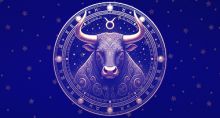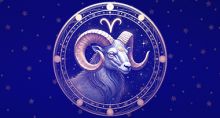Significance of Hayagriva Jayanthi
Lord Hayagriva, an Introduction
Lord Hayagriva is an incarnation of Lord Vishnu, the supreme God of protection and sustenance. He remains to be the embodiment of intelligence and wisdom. Hayagriva is a unique God, who has the face of a horse and the physique of a human being. The Sanskrit word ‘Haya’ means the horse, while ‘Griva’ denotes the neck or the face. Hence, this horse-faced lord is known as Hayagriva. Lord Vishnu is said to have taken Hayagriva Avatar for protecting the sacred Vedas and restoring them to Lord Brahma, the God of creation.
 Hayagriva Jayanthi
Hayagriva Jayanti is the day of advent of Hayagriva, that is the day when the Lord took the Hayagriva Avatar. It is observed on the Pournima full Moon day, in the Hindu calendar month of Shravan or the Tamil month of Aadi (July–August).
Legends associated with Hayagriva
Mahabharatha and other Puranas speak in detail about the incarnation of Hayagriva.
As per one of the legends, the mighty demons Madhu and Kaitabha once stole away the Vedas from Brahma, the God of creation, and hid them deep down under the sea bed. It was a terrible loss as it was absolutely necessary for Brahma to have the Vedas with him for performing the job of creation successfully. So he sought Lord Vishnu’s help immediately, for getting the texts safely back with him. Vishnu stepped in right earnest, took the form of Hayagriva, the man-horse, fought a tough battle with the powerful demons and slayed them in the end. He thus retrieved the Vedas and restored them safely to Brahma, for him to continue with his creation without any impediment. The grateful universe still remembers and worships Lord Hayagriva as their great benefactor.
Another legend talks about a horse-faced demon called by the same name, Hayagreeva. He was the son of Kashyapa Prajapathi. Having obtained the boon that he can be killed by none other than another Hayagriva, he began playing havoc in the universe. It was left to Lord Vishnu to take on him, and in the battle that took place, the Lord ensured that his own head got severed, so that Goddess Durga could arrange to place a horse head in its place. Thus, Vishnu himself became another Hayagriva, slayed the demon Hayagreeva and put an end to evil.
Depiction of Hayagriva
Hayagriva looks graceful, fair in complexion, seated on a white lotus and wearing pure white garments. In his two upper arms, he holds the conch and the discus, while one of his lower arms holds the scriptures and the other sports Gnyana Mudra, the wisdom-bestowing posture.
Hayagriva Jayanthi
Hayagriva Jayanti is the day of advent of Hayagriva, that is the day when the Lord took the Hayagriva Avatar. It is observed on the Pournima full Moon day, in the Hindu calendar month of Shravan or the Tamil month of Aadi (July–August).
Legends associated with Hayagriva
Mahabharatha and other Puranas speak in detail about the incarnation of Hayagriva.
As per one of the legends, the mighty demons Madhu and Kaitabha once stole away the Vedas from Brahma, the God of creation, and hid them deep down under the sea bed. It was a terrible loss as it was absolutely necessary for Brahma to have the Vedas with him for performing the job of creation successfully. So he sought Lord Vishnu’s help immediately, for getting the texts safely back with him. Vishnu stepped in right earnest, took the form of Hayagriva, the man-horse, fought a tough battle with the powerful demons and slayed them in the end. He thus retrieved the Vedas and restored them safely to Brahma, for him to continue with his creation without any impediment. The grateful universe still remembers and worships Lord Hayagriva as their great benefactor.
Another legend talks about a horse-faced demon called by the same name, Hayagreeva. He was the son of Kashyapa Prajapathi. Having obtained the boon that he can be killed by none other than another Hayagriva, he began playing havoc in the universe. It was left to Lord Vishnu to take on him, and in the battle that took place, the Lord ensured that his own head got severed, so that Goddess Durga could arrange to place a horse head in its place. Thus, Vishnu himself became another Hayagriva, slayed the demon Hayagreeva and put an end to evil.
Depiction of Hayagriva
Hayagriva looks graceful, fair in complexion, seated on a white lotus and wearing pure white garments. In his two upper arms, he holds the conch and the discus, while one of his lower arms holds the scriptures and the other sports Gnyana Mudra, the wisdom-bestowing posture.
 Hayagriva Jayanthi
Hayagriva Jayanti is the day of advent of Hayagriva, that is the day when the Lord took the Hayagriva Avatar. It is observed on the Pournima full Moon day, in the Hindu calendar month of Shravan or the Tamil month of Aadi (July–August).
Legends associated with Hayagriva
Mahabharatha and other Puranas speak in detail about the incarnation of Hayagriva.
As per one of the legends, the mighty demons Madhu and Kaitabha once stole away the Vedas from Brahma, the God of creation, and hid them deep down under the sea bed. It was a terrible loss as it was absolutely necessary for Brahma to have the Vedas with him for performing the job of creation successfully. So he sought Lord Vishnu’s help immediately, for getting the texts safely back with him. Vishnu stepped in right earnest, took the form of Hayagriva, the man-horse, fought a tough battle with the powerful demons and slayed them in the end. He thus retrieved the Vedas and restored them safely to Brahma, for him to continue with his creation without any impediment. The grateful universe still remembers and worships Lord Hayagriva as their great benefactor.
Another legend talks about a horse-faced demon called by the same name, Hayagreeva. He was the son of Kashyapa Prajapathi. Having obtained the boon that he can be killed by none other than another Hayagriva, he began playing havoc in the universe. It was left to Lord Vishnu to take on him, and in the battle that took place, the Lord ensured that his own head got severed, so that Goddess Durga could arrange to place a horse head in its place. Thus, Vishnu himself became another Hayagriva, slayed the demon Hayagreeva and put an end to evil.
Depiction of Hayagriva
Hayagriva looks graceful, fair in complexion, seated on a white lotus and wearing pure white garments. In his two upper arms, he holds the conch and the discus, while one of his lower arms holds the scriptures and the other sports Gnyana Mudra, the wisdom-bestowing posture.
Hayagriva Jayanthi
Hayagriva Jayanti is the day of advent of Hayagriva, that is the day when the Lord took the Hayagriva Avatar. It is observed on the Pournima full Moon day, in the Hindu calendar month of Shravan or the Tamil month of Aadi (July–August).
Legends associated with Hayagriva
Mahabharatha and other Puranas speak in detail about the incarnation of Hayagriva.
As per one of the legends, the mighty demons Madhu and Kaitabha once stole away the Vedas from Brahma, the God of creation, and hid them deep down under the sea bed. It was a terrible loss as it was absolutely necessary for Brahma to have the Vedas with him for performing the job of creation successfully. So he sought Lord Vishnu’s help immediately, for getting the texts safely back with him. Vishnu stepped in right earnest, took the form of Hayagriva, the man-horse, fought a tough battle with the powerful demons and slayed them in the end. He thus retrieved the Vedas and restored them safely to Brahma, for him to continue with his creation without any impediment. The grateful universe still remembers and worships Lord Hayagriva as their great benefactor.
Another legend talks about a horse-faced demon called by the same name, Hayagreeva. He was the son of Kashyapa Prajapathi. Having obtained the boon that he can be killed by none other than another Hayagriva, he began playing havoc in the universe. It was left to Lord Vishnu to take on him, and in the battle that took place, the Lord ensured that his own head got severed, so that Goddess Durga could arrange to place a horse head in its place. Thus, Vishnu himself became another Hayagriva, slayed the demon Hayagreeva and put an end to evil.
Depiction of Hayagriva
Hayagriva looks graceful, fair in complexion, seated on a white lotus and wearing pure white garments. In his two upper arms, he holds the conch and the discus, while one of his lower arms holds the scriptures and the other sports Gnyana Mudra, the wisdom-bestowing posture.
https://youtu.be/J4OzeV5yfCQ
Importance of Hayagriva Jayanthi
The horse itself is said to represent knowledge and wisdom. While Hayagriva is regarded as the one who bestows higher learning, he is also held as the guardian deity who wards off evil.
On the day of Hayagriva Jayanthi, devotees chant hymns in his praise and offer worship to him at homes and in temples. Brahmins, especially in south, perform Upakarma or the sacred thread ceremony on that day. Students and others also pray to Lord Hayagriva for blessing them with good intellect, knowledge and wisdom. People in North celebrate the festival of Rakshabandhan on this day. The day is also well celebrated in the Lord Hayagriva temple at Hojo, Assam. Special worships are also offered to him at other temples, Hayagriva Madhava Temple at Nanganallur in the outskirts of Chennai city being an important one among them.
Invoke the blessings of Hayagriva to increase intelligence, insight, intuition and improve analytical & intuitive knowledge 


















